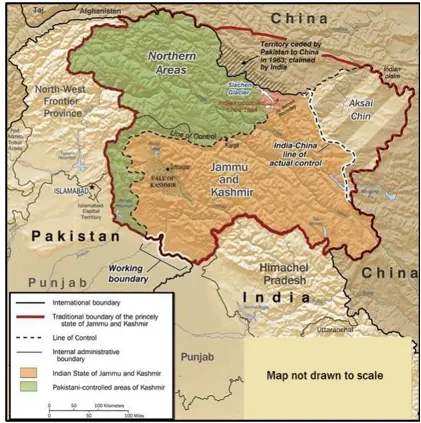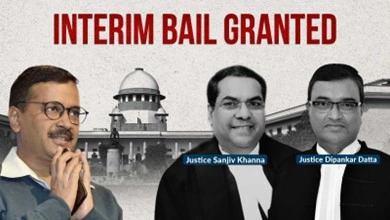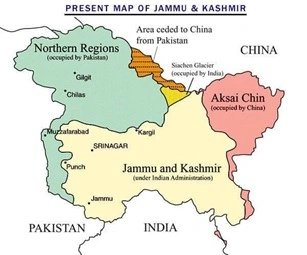Tuesday, 16th July 2024
SC Judgment on the Muslim Women’s Right to Maintenance
Why in the news?
- The Supreme Court of India recently issued a landmark judgement in the case of Mohd Abdul Samad vs The State of Telangana.
- This judgement significantly strengthens the rights of divorced Muslim women to claim maintenance under Section 125 of the Code of Criminal Procedure (CrPC), 1973.
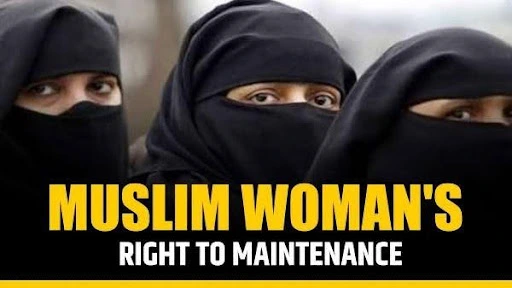
- This decision represents a pivotal moment, reaffirming the provision that allows women to seek maintenance, providing clarity and justice after decades of ambiguity.
The Shah Bano Case and its Aftermath:
- The issue of maintenance rights for divorced Muslim women first gained national attention with the SC ruling in the Shah Bano case in 1985 (Mohd Ahmed Khan vs Shah Bano Begum).
- The Court upheld the right of a divorced Muslim woman to claim maintenance under Section 125 of the CrPC, which led to significant political and social uproar.
- In response, the Indian Parliament enacted the Muslim Women (Protection of Rights on Divorce) Act (MWA) in 1986.
- The Act provided for maintenance during the iddat period (the waiting period following a divorce) and a fair and reasonable provision for the future.
The Legal Conundrum Surrounding the Maintenance Rights of Divorced Muslim Women in India:
- Conflicting Judgments and Legal Ambiguity:
- The MWA was perceived by many as a regressive step, believed to limit the maintenance rights of divorced Muslim women to the iddat period (a few months post-divorce) and mandate a 'fair and reasonable provision' for their future within this period.
- The introduction of the MWA led to confusion and conflicting interpretations by various high courts.
- Some courts ruled that the MWA provided a more comprehensive remedy that should be exclusively followed, effectively nullifying the applicability of Section 125 of the CrPC to divorced Muslim women.
- Other courts maintained that Section 125, being a secular provision, continued to be available to all women irrespective of their religion, thus including divorced Muslim women.
High Courts' Divergent Rulings:
- Exclusive Applicability of MWA:
- Some high courts held that since the MWA was specifically enacted for divorced Muslim women, it should take precedence over the CrPC.
- This interpretation suggested that the remedies provided under the MWA were both special and exhaustive, thereby excluding the application of Section 125 of the CrPC to divorced Muslim women.
- Concurrent Applicability:
- Other high courts ruled that the two legal provisions could coexist.
- They argued that Section 125 of the CrPC, being a secular and beneficial legislation, was intended to provide maintenance to all women, including those divorced under Muslim personal law.
- These courts emphasised that the CrPC aimed at preventing destitution and vagrancy, objectives that should not be overridden by the MWA.
- Hierarchy of Laws:
- Another line of reasoning was based on the principle of lex specialis, which suggests that a specific law (MWA) should prevail over a general law (CrPC).
- However, this approach was complicated by the fact that the CrPC is a procedural law with a broad social welfare mandate, while the MWA is a personal law specific to Muslim women.
- SC's Clarification:
- The legal ambiguity and conflicting high court judgments necessitated a definitive ruling by the SC.
- In the Mohd Abdul Samad case, the SC provided clarity by stating that the enactment of the MWA did not extinguish the rights of divorced Muslim women under Section 125 of the CrPC.
- The SC emphasised that Section 125 is a secular provision designed to prevent vagrancy and destitution by ensuring that women unable to maintain themselves receive maintenance.
- It is a socially beneficial provision that should not be negated by the MWA.
- The Court held that while the MWA provides specific rights and remedies, it does not override or negate the broader and more inclusive protections offered under the CrPC.
The Case of Mohd Abdul Samad vs The State of Telangana and the SC Verdict:
- About the Case:
- In this case, a deserted wife approached the family court in Telangana for maintenance under Section 125, and the court awarded her Rs 20,000 as monthly maintenance.
- Subsequently, her husband divorced her and contested her right to claim maintenance under Section 125, arguing that her rights were now governed by the MWA.
- The Telangana High Court rejected the husband's arguments but reduced the maintenance amount to Rs 10,000 per month. The husband then appealed to the Supreme Court.
- SC Verdict:
- On July 10, a bench comprising Justices B V Nagarathna and Augustine George Masih upheld the wife's right to claim maintenance under Section 125 of the CrPC.
- The Court ruled that this right is not nullified by the enactment of the MWA, emphasising the socially beneficial nature of Section 125.
- This judgement has thus put to rest the prevailing controversy and reinforced the maintenance rights of divorced Muslim women.
Some others Cases to Maintenance Rights for Divorced Muslim Women in India:
- The Danial Latifi Case (2001):
- In this case, the constitutional validity of the MWA was challenged.
- The petitioners argued that the MWA violated the fundamental rights of Muslim women by limiting their maintenance rights.
- A five-judge Constitution Bench of the SC examined these arguments and provided a landmark judgement that balanced the provisions of the MWA with the constitutional mandate of equality and non-discrimination.
- The SC upheld the constitutional validity of the MWA, affirming that it did not violate the fundamental rights enshrined in Articles 14 (Right to Equality), 15 (Prohibition of Discrimination), and 21 (Right to Life) of the Indian Constitution.
- The Court ruled that MWA should not be limited to the iddat period but must encompass the future needs of the divorced wife.
- Sabra Shamim vs Maqsood Ansari (2004):
- The Allahabad HC reiterated that the MWA does not take away the right of a divorced Muslim woman to claim maintenance under Section 125 of the CrPC.
- It emphasised that the provisions of the CrPC are available to all women, irrespective of their religion.
- Iqbal Bano vs State of UP (2007):
- The SC held that a divorced Muslim woman has the option to either proceed under the provisions of the MWA or under Section 125 of the CrPC, thereby reaffirming the concurrent applicability of both legal frameworks.
- Shamim Bano vs Asraf Khan (2014):
- The SC once again upheld the right of a divorced Muslim woman to claim maintenance under Section 125, stating that the beneficial provisions of the CrPC are available to all women, including those governed by personal laws.
Conclusion:
The SC’s judgement in Mohd Abdul Samad vs The State of Telangana ensures justice and equality for divorced Muslim women by upholding their right to claim maintenance under Section 125 of the CrPC. It clarifies legal ambiguity, reinforces the law's secular and beneficial intent, and affirms the fundamental rights of all women, contributing to social justice and welfare in India.
|
UPSC Civil Services Examination, Previous Year Questions (PYQs) Prelims Q:1 Which Article of the Constitution of India safeguards one’s right to marry the person of one’s choice? (2019)
Ans: (b) Mains Q:1 Customs and traditions suppress reason leading to obscurantism. Do you agree? (2020) |
Source: IE
Rules for civil servants
Why in the news ?
- The Centre has constituted a single-member committee within the Department of Personnel and Training (DoPT) to scrutinise the appointment documents of IAS probationer Puja Khedkar.
- Puja Khedkar secured the 821st rank in the 2022 UPSC Civil Services Examination under the OBC and Physically Handicapped quotas.
- This appointment has sparked controversy over the validity of her category allocations.
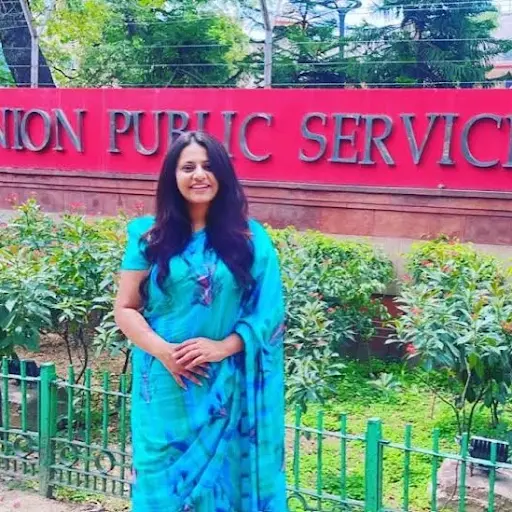
Rules Governing Civil Servants:
- Rules on Integrity of Services
- Civil servants, including IAS, IPS, and IFoS officers, are governed by the All-India Services (Conduct) Rules, 1968, and the Indian Administrative Service (Probation) Rules, 1954, which outline their conduct and responsibilities.
- Rules for Probationers
- During their probation period, officers are subject to additional rules under the Indian Administrative Service (Probation) Rules, which span at least two years following their selection.
- Allegations Against Khedkar
- Puja Khedkar faces allegations regarding the validity of her OBC and PH certificates, crucial for her appointment under reserved categories. These allegations, if substantiated, could lead to her discharge from service.
Rules on Integrity of Services:
- Applicability: All IAS, IPS, and IFoS officers are bound by the All-India Services (Conduct) Rules and commence adherence from the beginning of their service.
- Integrity and Devotion to Duty: Rule 3(1) mandates officers to uphold absolute integrity and dedicate themselves to their duties at all times.
- Gifts and Benefits: Rule 11(1) regulates acceptance of gifts, allowing only those from near relatives with strict reporting for gifts exceeding Rs 25,000, aiming to prevent undue influence.
- Impartiality: Officers are barred from engaging in any trade or business to maintain impartiality and prevent conflicts of interest.
- Unbecoming Conduct: Rule 4(1) prohibits officers from using their position to secure employment for family members in private enterprises or NGOs.
- Property Details: Rule 13 mandates annual submission of property returns to ensure transparency and prevent illicit wealth accumulation.
- 2014 Amendments: Introduced sub-rules emphasising high ethical standards, political neutrality, accountability, transparency, responsiveness to weaker sections, and courteous behaviour with the public.
Rules for Probationers:
- Conditions: Probationers undergo training at Lal Bahadur Shastri National Academy of Administration (LBSNAA), Mussoorie, and must pass an examination after two years for confirmation.
- Salary and Allowances: They receive a fixed salary and travel allowance but do not have entitlements like official vehicles, accommodation, or chambers with staff.
- Probationer Discharge: Rule 12 outlines circumstances for discharge, including unsuitability for service or neglect of duties.
- Enquiry Process: Disciplinary actions involve a summary inquiry by a DoPT-appointed committee, with decisions typically within two weeks.
Allegations Against Khedkar:
- Reservation Details:
- Since 1995, 27% of seats in civil services have been reserved for the OBC category.
- The PH reservation, introduced in 2006, reserves 3% of seats in every category (General, OBC, SC, and ST) for differently abled individuals.
- Validity of Certificates:
- Allegations question the authenticity of Khedkar's OBC and PH certificates, crucial for her appointment under reserved categories.
- Potential Consequences:
- If proven true that she falsified these certificates, Khedkar faces potential discharge from service. Probationers are discharged, while confirmed officers are dismissed.
- Legal Challenge:
- Complicating matters is a legal dispute over her PH status, where Khedkar failed to attend a required medical examination by the UPSC, citing reasons including a Covid-19 infection.
- Criticism on Eligibility:
- Critics have raised concerns about her eligibility for OBC (non-creamy layer) benefits, citing her family's political background and her father's past government service.
- Income Criteria:
- For those with parents in the private sector, eligibility for non-creamy layer status requires an annual income below Rs 8 lakh.
- Public sector incomes are exempt from consideration.
- According to DoPT rules, individuals qualify as creamy layer if either parent becomes a Group-A official before age 40, or both are Group-B officials with similar ranks.
Conclusion:
The controversy surrounding Puja Khedkar's appointment underscores the importance of adherence to stringent rules governing civil service appointments and conduct, ensuring integrity, transparency, and fairness in public administration.
Source: IE
Puri Jagannath Temple's Ratna Bhandar
Why in the news ?
- Recently, the Odisha government unlocked the revered Ratna Bhandar of the 12th-century Jagannath temple in Puri after 46 years.
About:
- The Ratna Bhandar, located on the northern side of the Jagamohana (assembly hall of the temple), houses invaluable treasures including jewellery offered by former kings and global devotees to Lord Jagannath, Lord Balabhadra, and Goddess Subhadra.
- Records of Rights under the Puri Sri Jagannath Temple Act, 1952, detail its contents, comprising two chambers: the outer (Bahara Bhandar) and inner (Bhitar Bhandar), sealed for 46 years.
- An inventory from 1978 lists 128.38 kg of gold and 221.53 kg of silver.
- The Archaeological Survey of India (ASI) oversees the temple and inspected the Ratna Bhandar structurally in 2008, unable to access the inner chamber.
Key Facts About Jagannath Temple:
- Puri’s Jagannath temple, dedicated to Lord Jagannath, an incarnation of Vishnu, along with Balabhadra and Subhadra, is among Odisha and India’s revered Hindu shrines.
- Known as the “White Pagoda,” it is part of the chardhams, four sacred pilgrimage sites for Hindus, and forms Odisha's Golden Triangle with Bhubaneswar (City of Temples) and Konark Sun Temple (Black Pagoda).
- Constructed in the 12th century by Ganga Dynasty’s King Ananta Varman Chodaganga Deva, it exemplifies Kalinga architecture with its curvilinear towers, intricate carvings, and ornate sculptures.
- The temple features four gates positioned at its boundary wall mid-points, each named after animals and facing the cardinal directions
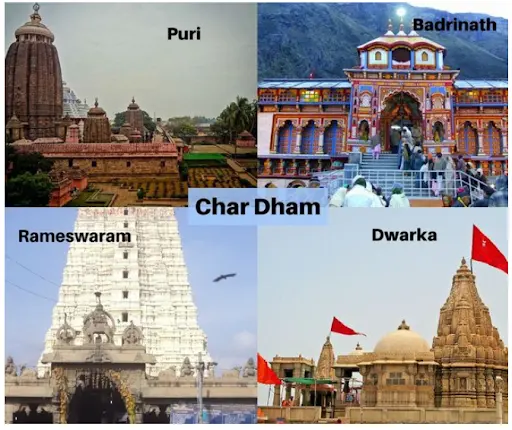
|
Gate |
Direction |
Belief |
|
Singhadwara (Lion's Gate) |
East |
Attain moksha (liberation from the cycle of birth-rebirth) |
|
Hastidwara (Elephant Gate) |
North |
Brings wealth |
|
Aswadwara (Horse Gate) |
South |
Helps one shed kama (lust) |
|
Vyaghra Dwara (Tiger Gate) |
West |
Reminds one of one's dharma (cosmic law underlying right behaviour and social order) |
Yamanika Tirtha:
- Puri is also known as ‘Yamanika Tirtha’ in Hindu belief, where the power of ‘Yama’, the god of death, is said to be nullified due to the presence of Lord Jagannath.
- Associated Major Festivals: The Jagannath Temple in Puri celebrates several major festivals:
- Snana Yatra: The ceremonial bathing of the deities.
- Netrotsava: The festival of the eyes, where the deities' eyes are painted.
- Rath Yatra: The famous chariot festival where the deities are taken on a procession.
- Sayan Ekadasi: The ritual marking Lord Jagannath's resting period.
Additional Information:
- Odisha School (Kalinga Architecture):
- Sub-school of Nagara School: Developed within the Kalinga empire, the Odisha School of architecture exhibited distinct characteristics.
- Exterior Decorations: Lavish and intricate carvings adorned the exterior walls, showcasing rich craftsmanship.
- Interior Contrast: In contrast, the interior walls were typically plain and simple, focusing architectural grandeur on the exterior.
- Porch Design: Instead of pillars, the architecture employed iron girders to support the roofs of porches and other structures.
- Shikhara Style: The shikhara, known as rekha deul, featured almost vertical roofs that sharply curved inwards, creating a distinctive architectural silhouette.
|
UPSC Civil Services Examination, Previous Year Question (PYQ) Prelims: Q:1 With reference to Chausath Yogini Temple situated near Morena, consider the following statements: (2021)
Which of the statements given above are correct?
Ans: (c) Q:2 Building ‘Kalyaana Mandapam’ was a notable feature in the temple construction in the kingdom of (2019)
Ans: (d) Mains: Q:1 The rock-cut architecture represents one of the most important sources of our knowledge of early Indian art and history. Discuss. (2020) |
Donald Trump shot
Why in the news ?
- During a campaign rally in Butler, Pennsylvania, Donald Trump was targeted in an apparent assassination attempt.
- The suspected gunman, identified as 20-year-old Thomas Matthew Crooks, fired up to eight shots from an AR-15-style rifle before being neutralised by a Secret Service sharpshooter.

What is the U.S. Secret Service?
- The U.S. Secret Service is a federal law enforcement agency under the Department of Homeland Security.
- Originally established in 1865 to combat counterfeiting of U.S. currency, its role expanded significantly after the assassination of President William McKinley in 1901.
About the Protective Mission:
- The President, Vice President, President-elect, Vice President-elect, and their immediate families.
- Former Presidents and their spouses (unless remarried).
- Major presidential and vice presidential candidates within 120 days of a general election.
Key Responsibilities:
- Protection Details: Providing physical security for the White House, the Vice President’s residence, and foreign diplomatic missions in Washington D.C.
- Security for Events: Securing major events designated as National Special Security Events, such as the State of the Union address and presidential inaugurations.
What is the difference between SPG (Special Protection Group) and the US Secret Service?
|
Dimensions |
India’s SPG |
US Secret Service |
|
Mandate and Origins |
The SPG was formed in 1988 to provide proximate security to the Prime Minister of India. |
The U.S. Secret Service was established in 1865 to combat currency counterfeiting. |
|
Scope of Protection |
The SPG is mandated to provide security only to the serving Prime Minister and their immediate family. |
The U.S. Secret Service protects the President, Vice President, their families, candidates, and former Presidents indefinitely. |
|
Tenure and Resignation |
SPG personnel have a fixed 6-year tenure and cannot resign during their deputation |
U.S. Secret Service agents can resign freely and may serve on protective details for 3-5 years before transfer |
|
Coordination with Foreign Agencies |
When the Indian PM visits the U.S., the SPG takes a backseat while the U.S. Secret Service takes over primary security responsibilities. |
The U.S. Secret Service coordinates with foreign agencies to protect visiting heads of state, including the Indian PM. |
|
Operational Differences |
The SPG has maintained an unblemished record. |
The U.S. Secret Service has had one President (John F. Kennedy) assassinated. |
Conclusion:
While both the SPG (Special Protection Group) in India and the U.S. Secret Service are elite protective agencies with distinct mandates, origins, and operational structures, they each play critical roles in safeguarding their respective leaders.
|
UPSC Civil Services Examination, Previous Year Question (PYQ) Mains: Q:1 Indian government has recently strengthened the anti-terrorism laws by amending the Unlawful Activities (Prevention) Act, (UAPA), 1967 and the NIA Act. Analyse the changes in the context of the prevailing security environment while discussing the scope and reasons for opposing the UAPA by human rights organisations. (2019) |
Source: TH
Need for a stronger aviation ecosystem
Why in the news ?
- The privatisation of Air India in 2022, transferring ownership to Tata Sons, marks a significant reform in India's aviation sector since the 2004 liberalisation wave.
- This strategic shift is expected to stabilise the airline industry and have far-reaching benefits nationally and internationally.
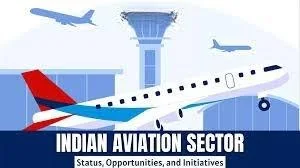
Major Fleet Expansions and Infrastructure Investments:
- Fleet Expansion: Since 2022, the Indian airline sector has seen significant developments:
- Air India has ordered a record 470 aircraft.
- IndiGo has rapidly expanded with a fleet of about 370 aircraft and more than 980 on order.
- This could potentially double India's fleet of nearly 700 aircraft by 2030.
- The Indian airline industry took about 90 years to reach a fleet size of 700 aircraft from its first commercial flight.
- With the current growth rate, carriers could add 600-700 aircraft in just the next 5-7 years.
- Robust Airline System and Growth in Traffic:
- Air India's $6.5 billion investment and IndiGo's record $1 billion profitability in FY2024 highlight a robust airline system.
- Despite supply-chain challenges, domestic and international traffic grew by 13% and 22%, respectively, in FY2024.
- Efforts to Enhance Airport Infrastructure: To support this expansion, India is investing $11 billion in airport infrastructure:
- National Capital Region:
- Delhi International Airport will expand capacity to 130-140 million passengers annually.
- Noida International Airport is set to open in April 2025 with a 70 million passenger capacity.
- Mumbai Metropolitan Region:
- Development of a dual airport system handling 145 million passengers annually.
- Non-Metro Airports:
- The Adani Group is expanding capacity at six non-metro airports.
- The Airports Authority of India is investing $4 billion to enhance non-metro airport capacity.
- Greenfield Airports:
- New airports are planned for Chennai and Pune.
- National Capital Region:
Regulatory Frameworks for the Aviation Sector:
- National Civil Aviation Policy (NCAP) 2016
- Serves as the guiding document for the Indian aviation sector.
- Legal Framework
- The Ministry of Civil Aviation oversees aviation policy under the Aircraft Act 1934 and Aircraft Rules 1937.
- Directorate General of Civil Aviation (DGCA)
- Acts as the statutory regulatory authority for safety, licensing, airworthiness, and related issues.
- Airports Authority of India (AAI)
- Responsible for managing and operating airports and providing air traffic management services.
- Bureau of Civil Aviation Security (BCAS)
- Sets standards and measures for the security of civil flights and airports.
- Airport Economic Regulatory Authority (AERA)
- Regulates tariffs and other charges for aeronautical services at major airports. Monitors the performance standards of these services.
- Regional Connectivity Scheme (RCS) - UDAN
- Aims to make air travel affordable and widespread. Enhances regional air connectivity through financial incentives, subsidies, and infrastructural support.
Way Forward:
- Provide Incentives for Investment in Skilling, Training, and Education
- Address potential skill shortages, particularly among technical staff like pilots, maintenance engineers, and technicians.
- New DGCA duty and rest norms for pilots could increase pilot demand by 15%.
- Shortages also exist in air-traffic controllers and security personnel.
- The Budget should provide incentives for investment in skilling, training, and education.
- Restructuring of Institutions
- Restructure the Directorate General of Civil Aviation and the Bureau of Civil Aviation Security to address challenges from technological disruptions and environmental issues.
- Corporatize air traffic control by separating Air Navigation Services from AAI to improve capital access for system investments.
- Rationalisation of Taxes
- Consider rationalising taxes, which currently account for nearly 20% of an airline's quarterly revenue, including state levies on aviation turbine fuel.
|
UPSC Civil Services Examination, Previous Year Questions (PYQs) Mains: Q:1 Examine the development of Airports in India through joint ventures under Public–Private Partnership (PPP) model. What are the challenges faced by the authorities in this regard? (2017) |
Source: TH
ICAR to Launch ‘One Scientist, One Product’ Scheme
Why in the News?
- The Indian Council of Agricultural Research (ICAR) is set to launch its ‘One Scientist-One Product’ programme on July 16 to enhance research in the fields of agriculture and animal husbandry.
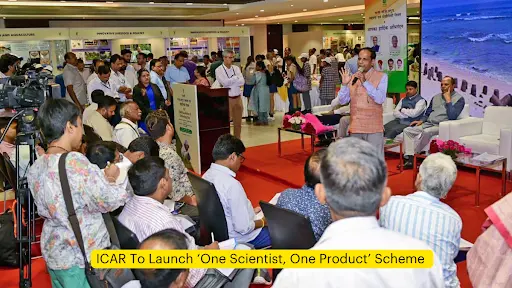
About Indian Council of Agricultural Research (ICAR):
- Establishment and Structure:
- Established: 1929
- Status: Registered society under the Societies Registration Act, 1860
- Autonomy: Operates under the Department of Agricultural Research and Education (DARE), Ministry of Agriculture and Farmers Welfare
- Headquarters: New Delhi
- Objective:
- Apex body for coordinating, guiding, and managing research and education in agriculture, including horticulture, fisheries, and animal sciences in India.
- Key Contributions:
- Played a pioneering role in ushering the Green Revolution and subsequent agricultural advancements in India through research and technology development.
Functions of ICAR:
- Agricultural Research and Development:
- Conducts and promotes research across various agricultural domains, including crop science, animal science, horticulture, fisheries, natural resource management, and agricultural engineering.
- Develops new technologies, practices, and innovations to improve agricultural productivity and sustainability.
- Education and Training:
- Oversees agricultural education and ensures high standards through a network of agricultural universities and colleges.
- Provides training and capacity-building programs for farmers, extension workers, and scientists to disseminate knowledge and skills.
- Policy Support and Advisory Role:
- Advises the government on policy matters related to agriculture, food security, and rural development.
- Supports the formulation of national agricultural policies and strategies.
- Extension Services:
- Implements extension programs to transfer technology from research labs to the fields.
- Collaborates with state agricultural universities, Krishi Vigyan Kendras (KVKs), and other extension agencies to provide farmers with timely information and assistance.
- Resource Management:
- Focuses on the conservation and sustainable management of natural resources, including soil, water, and biodiversity.
- Develops and promotes practices that enhance resource-use efficiency and environmental sustainability.
ICAR to Launch ‘One Scientist, One Product’ Scheme:
- The Indian Council of Agricultural Research (ICAR) is initiating the "One Scientist-One Product" program to advance research in agriculture and animal husbandry.
- This launch will coincide with the unveiling of 323 new varieties across 56 crops, including cereals, oilseeds, forage crops, and sugarcane, during a ceremony in Delhi marking ICAR's 96th foundation day.
- Among these, 289 are designed to withstand climate challenges, and 27 are enriched with additional nutrients.
- Union Agriculture Minister Shivraj Singh Chouhan will inaugurate the "One Scientist-One Product" initiative.
About One Scientist One Product Program:
- According to the Director-General of ICAR, each of the organisation's 5,521 scientists will undertake the development of a product, technology, model, concept, or significant publication.
- Scientists will outline their projects at the beginning of each year, with progress reviewed quarterly at the institute level and semi-annually at headquarters.
- This program is slated to operate for five years, with initial emphasis on enhancing yields of oilseeds and pulses.
ICAR’s Aim to Develop High-yielding Seeds:
- ICAR aims to introduce 100 new seed varieties and 100 farm technologies within 100 days, part of a comprehensive action plan initiated by the Centre, set to be launched by Prime Minister Modi by mid-September.
- Recent updates from ICAR highlight the role of breeder seeds in cultivating approximately 16 million hectares with bio-fortified crops like wheat, rice, pearl millet, lentil, and mustard during the 2023-24 period.
- Since 2014-15, ICAR has successfully released 2,593 high-yielding varieties, including 2,177 climate-resilient types and 150 bio-fortified varieties, contributing significantly to sustained agricultural productivity amidst challenging conditions
Source: TH
Manjeera Wildlife Sanctuary
Why in the news ?
- Recently, the Manjeera wildlife sanctuary in Telangana is undergoing a study to potentially become the state's first Ramsar site.
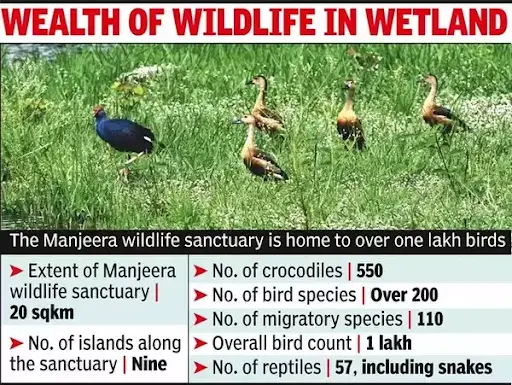
About Manjeera Wildlife Sanctuary:
- Location: Medak district, Telangana, India
- Type: Wildlife sanctuary and reservoir
- River: River Manjeera, a tributary of Godavari
- Significance: Potential Ramsar site, originally a crocodile sanctuary
Key Features:
- Fauna: Includes mugger crocodiles, freshwater turtles, various fish species, Indian hare, wild boar, mongoose, jackal.
- Birds: Over 70 species observed, nesting sites on marshy fringes and islands.
- Flora: Dry Savannah vegetation, freshwater plant species like Typha, Babool, Prosopis, etc.
- Reservoir: Man-made, supports irrigation and drinking water supply to Hyderabad and Secunderabad.
- Islands: Nine small islands with dense tree cover.
Source: TOI
e-FAST India Initiative
Why in the news ?
- Recently, NITI Aayog has announced the launch of the ‘NITI GearShift Challenge’ as part of the e-FAST India initiative.
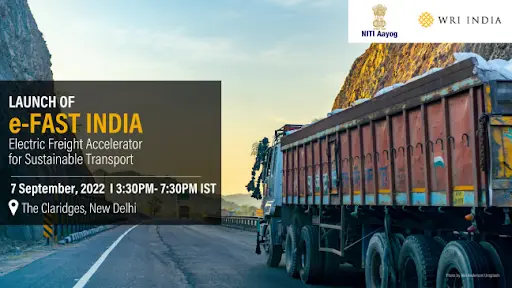
About e-FAST India Initiative:
- Launch Date: September 2022
- Objective: To decarbonize road-based freight transportation in India, aligning with the country's 2070 net zero commitments.
- Purpose: Facilitate a transition towards cleaner and greener freight transportation through collaboration at national and international levels.
- Key Features:
- Platform for collaboration among government, Original Equipment Manufacturers (OEMs), Logistics Service Providers (LSPs), Shippers, and industry experts.
- Supports ideation, pilot program development, and scalable implementation of electric technology in the freight sector.
- Emphasises technology integration and associated research to promote sustainable practices.
- Involves 12 knowledge partners to drive initiatives forward.
NITI GearShift Challenge:
- Launched by: NITI Aayog in collaboration with IIM Bangalore, Smart Freight Centre India, CALSTART/Drive to Zero, and WRI India.
- Objective: Foster innovative business models for the adoption of zero-emission trucks (ZETs) in India.
- Participants: Includes students, transport service practitioners, academics, and researchers.
- Focus: Address financial, technical, and operational challenges related to the adoption of electric trucks.
- Partnerships: Engages e-FAST India knowledge partners, financial institutions, and industry forums to support the initiative.
|
UPSC Civil Services Examination Previous Year Question (PYQ) Prelims Q:1 In the context of proposals for the use of hydrogen-enriched CNG (H-CNG) as fuel for buses in public transport, consider the following statements: (2019)
Which of the statements given above is/are correct?
Ans: B Mains Q:1 How is efficient and affordable urban mass transport key to the rapid economic development in India? (2019) |
Source: AIR
Syphilis
Why in the news ?
- Between 2018-19 and 2022-23, improved testing detected over 6,000 cases of syphilis, a sexually transmitted disease associated with unsafe sex, as per Mumbai AIDS Control Society (MDACS) data.
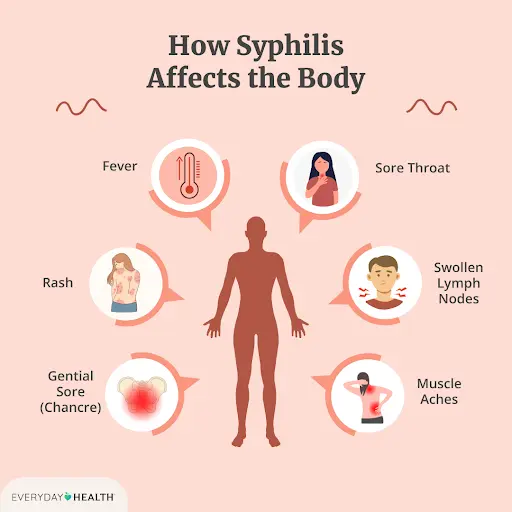
About Syphilis:
- Syphilis is a sexually transmitted infection (STI) caused by the bacterium Treponema pallidum.
- It can lead to severe health complications if left untreated.
key points about syphilis:
- Causes: It is caused by the bacterium Treponema pallidum, which can remain in the body for many years without causing symptoms.
- Transmission: Primarily transmitted through sexual contact with an infected person. It can also be passed from mother to baby during pregnancy, childbirth, or breastfeeding.
- Symptoms: Syphilis progresses through stages:
- Primary Stage: Begins with a painless sore (chancre) on genitals, rectum, or mouth.
- Secondary Stage: Can cause a non-itchy skin rash, swollen lymph nodes, and other flu-like symptoms.
- Latent Stage: Symptom-free phase where the infection remains in the body.
- Tertiary Stage: If untreated, it can lead to severe complications affecting the heart, brain, nerves, eyes, and other organs.
- Treatment:
- Syphilis is curable with antibiotics, especially in the early stages. Penicillin is the most commonly used medication.
- Regular testing and treatment are crucial to prevent long-term health issues.
Source: IE
SIM Swapping Scam
Why in the news ?
- Google Fi Wireless has launched 'Number Lock', a security feature empowering users to prevent the rising cybersecurity risk of SIM swapping.

About SIM Swapping Scam:
- Definition: SIM swapping occurs when malicious actors convince carriers to transfer a victim’s phone number to a new SIM card under their control.
- Implications: This enables them to gain unauthorised access to the victim's calls, texts, two-factor authentication codes, and potentially their financial accounts.
- Modus Operandi: Fraudsters typically begin by obtaining personal details such as phone numbers, bank account information, and addresses through phishing or vishing.
- Execution: Armed with this information, they visit mobile operator retail outlets posing as the victim, presenting forged ID proof, and falsely reporting the theft of the victim’s SIM card or mobile phone.
- Obtaining Duplicate SIMs: Fraudsters can obtain a duplicate SIM even if the original is functional, by falsely reporting its theft.
- Communication Tactics: Unlike other scams that involve direct communication to extract OTPs and private information, SIM swapping does not require direct victim interaction.
- Deception: However, fraudsters use missed calls to trick victims into leaving their phones unattended, resulting in disrupted network connectivity.
- Outcome: Once in control of the SIM card, perpetrators can intercept all calls and messages, and obtain passwords and OTPs, potentially granting access to the victim's bank accounts.
Source: TH
India’s Hunt for Critical Minerals
Why in the news?
- In June, the Ministry of Mines launched the fourth tranche of critical minerals auction, offering 21 blocks across 14 states.
- To incentivize exploration, the ministry announced a scheme to reimburse up to Rs 20 crore in exploration expenses for licence holders.
- Licence holders can claim up to Rs 20 crore for exploration activities and may receive additional reimbursements if they hand over a block for mining lease within three years.
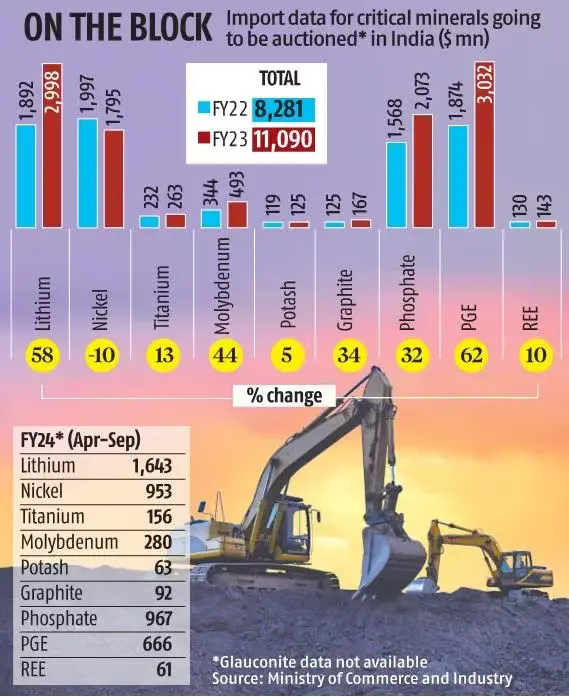
What are Critical Minerals?
- Critical minerals are raw materials essential for economic and national security, often used in high-tech industries and renewable energy technologies.
- They are typically rare, difficult to mine and substitute, and often vulnerable to supply chain disruptions due to limited global production and geopolitical factors.
- The growing demand for these minerals, driven by technological advancements and the global transition to green energy, underscores their critical importance.
- Securing a stable supply of critical minerals is a strategic priority for many countries to ensure economic stability and technological progress.
Examples of Critical Minerals:
- Lithium:
- Uses: Lithium-ion batteries for EVs, consumer electronics, and energy storage systems.
- Reserves: Australia and Chile hold the largest reserves of lithium according to the US Geological Survey (USGS).
- Cobalt:
- Uses: Battery production, aerospace components, and high-strength alloys.
- Reserves: The Democratic Republic of Congo (DRC) is the largest global supplier, with almost half of all cobalt reserves.
- Graphite:
- Uses: Batteries, fuel cells, and high-temperature applications.
- Reserves: In 2023, China had the world's largest reserves of natural graphite, approximately 78 million metric tons.
- Nickel:
- Uses: Stainless steel production and battery manufacturing.
- Reserves: Australia and Indonesia have the largest reserves of nickel.
- Rare Earth Elements (REEs):
- Uses: Manufacturing electronics, magnets, and military applications.
- Reserves: Worldwide reserves are approximately 110 million metric tons, with China holding the largest share (about 44 million metric tons). Other major reserves are found in Vietnam, Russia, and Brazil.
Critical Minerals Reserves in the World & India:
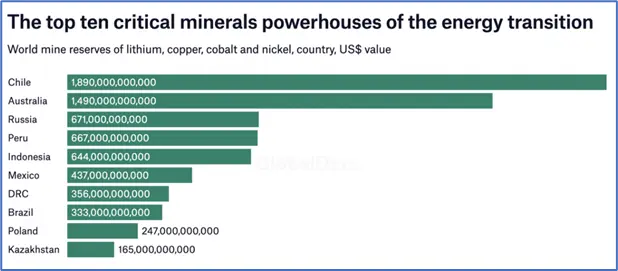
- India's Situation:
- India does not have reserves of nickel, cobalt, molybdenum, rare earth elements, neodymium, and indium.
- The country's requirement for copper and silver is higher than its current reserves.
Why Critical Minerals are Important for India?
- Foundation of Modern Technology:
- Critical minerals are essential for modern technology.
- They are used in products ranging from mobile phones and solar panels to electric vehicle batteries and medical applications.
- Energy Transition:
- Critical minerals are vital for renewable energy technologies needed to meet global "Net Zero" commitments.
- These minerals are necessary for building solar panels, semiconductors, wind turbines, and advanced batteries for storage and transportation.
- Futuristic Economy:
- The future global economy will rely on technologies dependent on minerals like lithium, graphite, cobalt, titanium, and rare earth elements.
- These minerals are the building blocks for the green and digital economy.
- Self Reliance:
- Identifying critical minerals will help India plan for their acquisition and preservation, considering the country's long-term needs.
- This strategy will reduce India's import dependency, as the country is currently 100% import-dependent for certain elements.
What Factors Impact the Criticality of Minerals?
- Two Main Parameters:
- Economic Importance:
- Assesses how raw materials are distributed across different industrial uses.
- Evaluates the impact on industries when certain minerals are unavailable in the supply chain.
- Supply Risk:
- Examines how global production of raw materials is concentrated in specific countries.
- Considers the governance and environmental practices of supplier countries.
- Look at reliance on imports and trade restrictions in other countries.
- Economic Importance:
What are the Initiatives Taken for Critical Minerals in India?
- Planning Commission:
- In 2011, a report by the Planning Commission (now NITI Aayog) highlighted the need for assured availability of mineral resources for India's industrial growth.
- Identified 12 strategic minerals: Tin, Cobalt, Lithium, Germanium, Gallium, Indium, Niobium, Beryllium, Tantalum, Tungsten, Bismuth, and Selenium.
- Ministry of Mines:
- Constituted a steering committee in 2011 to review the availability of rare-earth elements (REE) and energy-critical elements.
- Conducted a study titled “Rare Earths and Energy Critical Minerals: A Roadmap and Strategy for India” to review production, consumption, and reserves.
- Council on Energy, Environment and Water (CEEW):
- Conducted a study highlighting the lack of research in India regarding mineral resource security for the manufacturing sector.
- Identified 13 minerals as most critical by 2030: Rhenium, Beryllium, Rare Earths (Heavy), Germanium, Graphite, Tantalum, Zirconium, Chromium, Limestone, Niobium, Rare Earths (Light), Silicon, and Strontium.
- Geological Survey of India (GSI):
- Submitted a strategic plan for enhancing REE exploration in India in collaboration with the Atomic Mineral Division (AMD).
- Emphasised securing rare earth elements for India.
- Centre for Socio and Economic Progress (CSEP):
- Released a working paper in 2023 titled “Assessing the Criticality of Minerals in India”.
- Evaluated the criticality of 43 non-fuel minerals based on economic importance and supply risks.
What is the Mandate of the New Committee on Critical Minerals?
- Mandate:
- The Ministry of Mines constituted a committee to identify critical and strategic minerals.
- Chaired by Dr. Veena Kumari Dermal, Joint Secretary, Ministry of Mines.
- Concluded that the categorization of critical minerals depends on factors such as availability, monopoly on resources, use for frontier technologies/clean energy, substitutability, supply risk, and recycling.
- Criteria for Identifying Critical Minerals:
- Three-Stage Assessment:
- Study of International Strategies: Analysed critical mineral strategies from countries like Australia, USA, Canada, UK, Japan, and South Korea.
- Inter-Ministerial Consultation: Engaged with various ministries (e.g., Ministry of Power, Ministry of New and Renewable Energy, Department of Atomic Energy) to identify sector-specific critical minerals.
- Statistical Analysis: Conducted a detailed statistical exercise to compute factors like substitutability index, minerals cross-cutting index, and import reliance.
- Outcome:
- Identified a total of 30 minerals as most critical for India.
- Included two minerals specifically critical as fertiliser minerals.
- Three-Stage Assessment:
When is Domestic Production likely to Begin?
- Current Status: The commercialization of India's domestic mineral blocks is still in the early stages of exploration.
- Future Prospects: Significant benefits from domestic production are unlikely to materialise by 2030, as assessed by ICRA.
- Government Initiatives:
- The Indian government is actively promoting exploration activities to accelerate the development of domestic mineral resources.
- Efforts include incentivizing exploration and attracting more miners to participate in mineral extraction projects.
- India is pursuing overseas mineral acquisitions as a strategy to secure critical resources. For instance, a joint venture named Khanij Bidesh India Limited has been established to develop a lithium brine mine in Argentina.
- International Collaboration:
- India has joined the U.S.-led Mineral Security Partnership, which involves major global stakeholders in critical minerals.
- This partnership aims to enhance India's mineral security by fostering cooperation among significant buyers and sellers of critical minerals worldwide
Conclusion:
India's focus on clean energy and emissions reduction highlights the critical importance of minerals for electric vehicles and renewable energy systems. They are essential for India's transition to a greener and more sustainable future, driving growth, competitiveness, and sustainable development.
|
UPSC Civil Services Examination Previous Year Question (PYQ) Prelim: Q1.Consider the following minerals: (2020)
In India, which of the above is/are officially designated as major minerals?
Ans: D Q: 2.Recently, there has been a concern over the short supply of a group of elements called ‘rare earth metals’. Why? (2012)
Which of the statements given above is/are correct?
Ans: C Mains: Q:1 Discuss the multi-dimensional implications of uneven distribution of mineral oil in the world. (2021) |
Sources: TH
Share the article
Edukemy’s Current Affairs Quiz is published with multiple choice questions for UPSC exams
MCQ
Get Latest Updates on Offers, Event dates, and free Mentorship sessions.

Get in touch with our Expert Academic Counsellors 👋
FAQs
UPSC Daily Current Affairs focuses on learning current events on a daily basis. An aspirant needs to study regular and updated information about current events, news, and relevant topics that are important for UPSC aspirants. It covers national and international affairs, government policies, socio-economic issues, science and technology advancements, and more.
UPSC Daily Current Affairs provides aspirants with a concise and comprehensive overview of the latest happenings and developments across various fields. It helps aspirants stay updated with current affairs and provides them with valuable insights and analysis, which are essential for answering questions in the UPSC examinations. It enhances their knowledge, analytical skills, and ability to connect current affairs with the UPSC syllabus.
UPSC Daily Current Affairs covers a wide range of topics, including politics, economics, science and technology, environment, social issues, governance, international relations, and more. It offers news summaries, in-depth analyses, editorials, opinion pieces, and relevant study materials. It also provides practice questions and quizzes to help aspirants test their understanding of current affairs.
Edukemy's UPSC Daily Current Affairs can be accessed through:
- UPSC Daily Current Affairs can be accessed through Current Affairs tab at the top of the Main Page of Edukemy.
- Edukemy Mobile app: The Daily Current Affairs can also be access through Edukemy Mobile App.
- Social media: Follow Edukemy’s official social media accounts or pages that provide UPSC Daily Current Affairs updates, including Facebook, Twitter, or Telegram channels.

